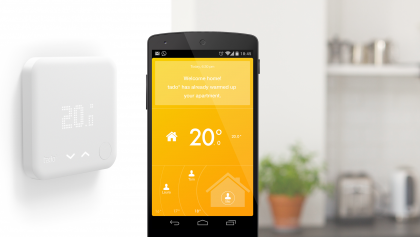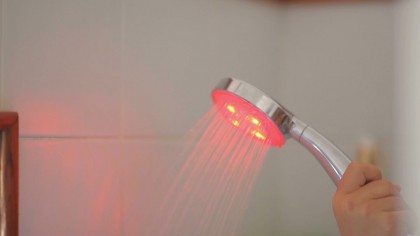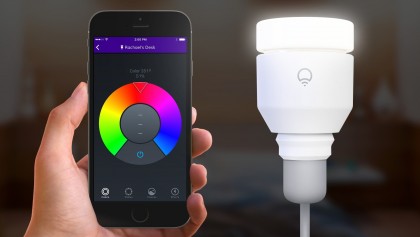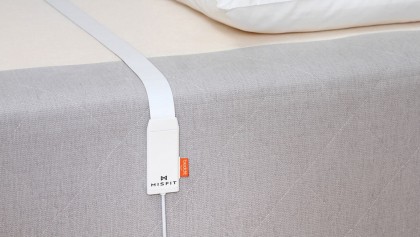How your phone will soon control your entire house
The technology of today and the promise of tomorrow
We've covered turning things on while you're away from home, but what about forgetting to turn them off? The iron, your hair straighteners, the central heating: all these things and more can be controlled from the cloud.
The Heat Genius system allows you to turn the heating and hot water on and off from a smartphone app, and even lets you control and schedule room heating individually. This way, Bruce Wayne can save on his heating bill by not warming the Batcave when he's busy in the study.
Similarly, Google has raised temperatures by buying out Nest and offering the Learning Thermostat through the Google Play store, alongside the Nest Cam home security camera and Nest Protect smoke alarm.
As well as working seamlessly with each other, Nest products connect to a range of third-party smart home tech including Philips Hue lights and Whirlpool washers. It's an Apple-like approach, encouraging people to look out for the "Works With Nest" logo before making a purchase – much like the "Designed for iPhone" badge Apple uses.
The Nest range is facing tough competition from tado, though: a heating system that claims to pay for itself within a year. It uses your smartphone location to automatically turn the heating off when everyone's left the house then turn it on again when someone comes back.
"The heating and cooling of our homes accounts for almost two thirds of our household energy use," says tado CEO Christian Deilmann. "Our technology can save users up to 31% a year on their heating use, not to mention the increased comfort it provides."

Even British Gas has got in on the action with Hive. As well as the usual remote temperature-adjusting functions, it can do multi-zone adjustments (like Heat Genius) and now works with an array of smart plugs and sensors.
Get daily insight, inspiration and deals in your inbox
Sign up for breaking news, reviews, opinion, top tech deals, and more.
Acting as a hub for your whole home, Hive can control door and window sensors (so you know when one's been opened), detect motion in the home, and turn appliances on and off using smart plugs.
Smart plugs are the anxious user's best friend, letting you check something's switched off when you're not at home. Hive isn't the only option, with Belkin's WeMo and D-Link's Home Smart making up some of the many branded versions of this handy product.
Costing around £40 each, smart plugs can switch anything on or off from your phone, and many also let you monitor electricity usage and set schedules. You'll never worry you left the iron on again.
Not burning the house down isn't the only reason to smarten up your home, though: it'll also save you money. If smart plugs give you a taste for energy monitoring, you can go a step further with smart meters (available from most energy suppliers) or third party monitoring products like the Loop Energy Saver gas and electricity tracker (£49.99 for both, about $71, AU$94).
The Loop system gives you real-time data in the mobile app, offers energy-saving advice and can even tell you which provider's tariff would suit you best. You can even switch providers right from the app.

And why stop there? The new connected showerhead from French firm Start & Blue uses Bluetooth to connect to an app that lets you set your ideal shower length. LED lights on the Hydrao Smart Shower then change from green through to amber and red to tell you when you've used too much water. Or you could just look at your pruney fingers.
Lights you can dim from your wrist
Once you've got the heating just the way you want it, it's time to turn up the temperature another way: with mood lighting.
Systems like Philips Hue and LIFX have made a huge splash with their smart lightbulbs, which let you turn your lights on or off and change the colour with your phone or tablet.

They've also (finally) opened up the API to third-party developers, leading to apps that sync your lighting with the beat of your music or flash when you've been tagged in a Facebook photo. Wearables company Misfit has also taken on the smart bulb market with Bolt, a connected bulb that, unlike Hue, doesn't need a hub.
It can be controlled through your phone or, for extra futurism, by tapping on Misfit's fitness wristbands like the Flash. Even more impressively, it can collaborate with Misfit's Beddit sleep monitor to wake you up gently at the right time. It starts from $49.99 (about £35, AU$67) for a bulb.

The Bolt isn't the only smart bulb to do more than light up a million colours, either: the latest round of products can also boost your WiFi signal (Sengled Boost Wifi Bulb, EU49.90), and even play music (Mipow Playbulb, £50, $79.99, about AU$107). Well, you didn't expect your smart lights to just light things, did you?
Current page: Stopping the worries when out and about
Prev Page Just phone home Next Page Keeping your home secure from your phone